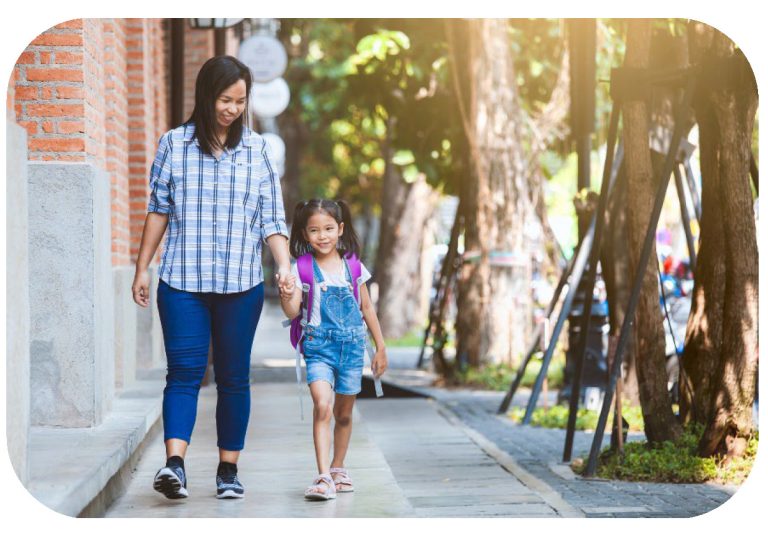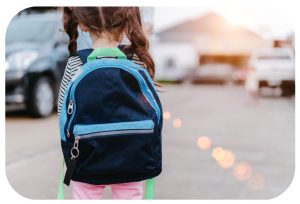Back to School: Safety First!
Content provided by: Alberta Health Services
Back-to-school is right around the corner for many families across the province. Parents and caregivers are encouraged to talk with their kids and teens about active and safe ways to travel to school. Active travel can boost physical health, build independence and encourage kids and teens to spend time outside.
Here are some practical ideas to get kids and teens safely active this school year.
Help your child plan for active travel
Talk with your child or teen about ways they can walk or wheel to school such as riding a bike, scooter or skateboard. For younger children, map out the route and practice it together. For older children and teens, help them think through the details, such as the route they’ll use, and the time it will take to get there. They may need your advice to avoid busy, high-speed roads.

Keep safety top-of-mind
Talk with your child or teen about gear, such as bright reflective clothing, that will help them stay safe when they’re wheeling to school. Help them make sure their helmet fits properly. For a how-to checklist, go to MyHealth.Alberta.ca and search “bike helmet yes test.” Talk with your child or teen about staying alert when walking or wheeling to school. Remind them to put their phones and ear buds away so they can be aware of what is going on around them.
Remember to role model safe active travel. For example, if you are walking to school with your child, cross the road only at marked intersections or crossings. Explain traffic signs and lights. If you are biking to school together, be sure to wear your helmet too.
Support safe active travel in your community
Find out if there are active travel groups or events at your local school, such as clubs
or walking school buses. Help your child connect with other kids who walk or wheel
to school. It can be motivating, social and
fun for them to travel together.
Listen to your teen’s ideas about how to make active travel more appealing. For example, help them advocate for more pathways or bike, scooter, or skateboard storage racks in public places, or take part
in community clean-ups or outdoor art projects.
School bus stop safety tips
Make sure your child understands these pedestrian safety rules for crossing the road safely:
• Cross the road at marked crosswalks.
• If there isn’t a crosswalk, cross at a corner of the road. If there isn’t a corner (like in a very small town), show your child the safest way to cross the road to get to the bus stop.
• Don’t cross the road during a red light.
• If your child needs to cross in front of the bus, make sure they wait until the bus driver sees them.
• Walk on the sidewalk. If there isn’t a sidewalk, walk on left side of the road, facing traffic.
• Teach your child to point, pause, and proceed before they cross the road.
• Point at the crosswalk with your arm to tell drivers that you’re ready to cross.
• Pause to look for traffic. Look in all directions. Make eye contact with drivers and wait until all vehicles have come to a full stop.
• Proceed across the street with your arm out. Look in both directions as you cross to make sure it’s safe.
To get to the bus stop safely, also teach your child to:
• be at the bus stop at least 5 minutes early
• walk (don’t run) to the bus
• not use a mobile device (like a cell phone or tablet) or other distracting things until they’re in a safe place
It’s a good idea to walk the bus route with your child until they know how to get to the bus stop safely. If you have young children, always walk them to and from the bus stop. If you can’t walk with your child, have another adult walk with them.

